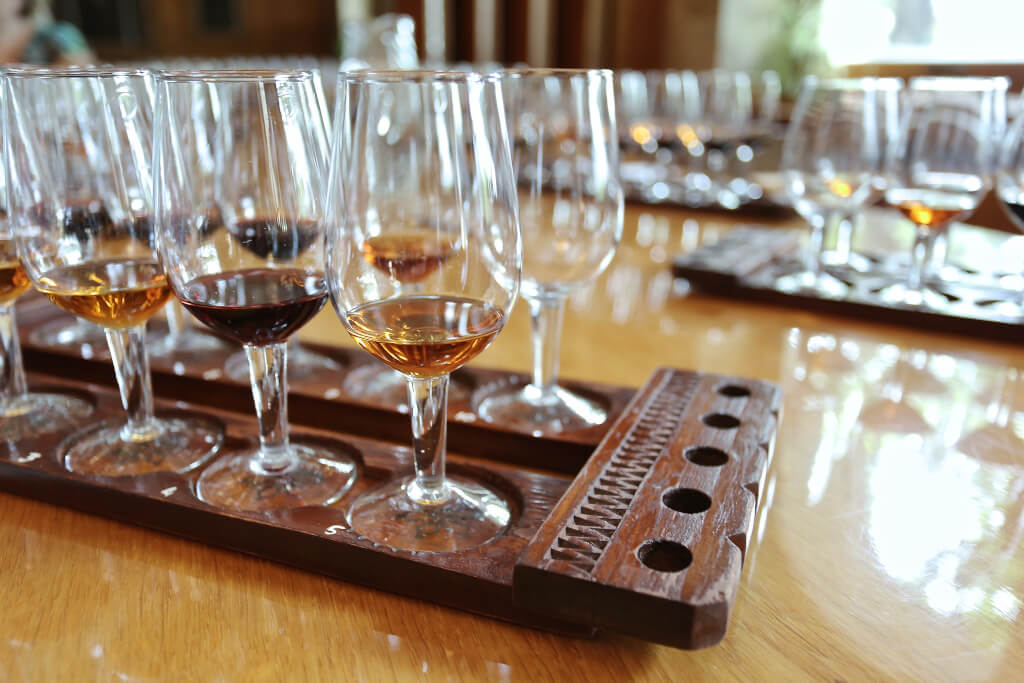Navigating the intricate and often bewildering space of whiskey tasting can seem daunting. For those uninitiated, terms like “peaty”, “tannic”, or “mouthfeel” can seem as if they belong to a secret society rather than a tasting session. Yet, understanding the vocabulary used by tasters not only deepens your appreciation of whiskey but also provides an enriching sensory experience. Let’s take you through the intricacies of whiskey tasting and shed light on some commonly used terms and the sensory experience that surrounds it.
1. Nose (Nosing)
Before you even take a sip, a significant part of tasting whiskey is in the smell or ‘nose’. Nosing the whiskey provides the first hints about its character. Whiskeys can be ‘fruity’ with aromas resembling apple or pear. Some might have a ‘floral’ nose, reminiscent of fresh blossoms. Conversely, a ‘smoky’ nose often indicates the presence of peat.
Example: An Islay single malt, like Laphroaig, often has a pronounced smoky nose due to the peat-rich region it hails from.
2. Palate
The ‘palate’ refers to the flavor profile of the whiskey as it graces your taste buds. This is where terms like ‘sweet’, ‘bitter’, ‘salty’, and ‘umami’ come into play. The palate can be quite diverse, ranging from flavors like ‘caramel’ and ‘vanilla’ to ‘citrus’ or ‘herbal’.
Example: A bourbon, with its corn-heavy mash bill, often reveals a sweet caramel or vanilla palate due to its new charred oak barrel aging process.
3. Mouthfeel
Beyond flavor, the texture of the whiskey, as it swishes around your mouth, is termed ‘mouthfeel’. Some whiskeys might be ‘oily’ or ‘creamy’, while others could be described as ‘watery’ or ‘thin’.
Example: Older whiskeys, especially those aged in sherry casks, often present an oily mouthfeel.
4. Finish
After swallowing, the flavors that linger are described as the ‘finish’. A ‘long’ finish means the flavors stay for an extended period, while a ‘short’ finish indicates they dissipate quickly. The finish can be ‘dry’, ‘warming’, ‘spicy’, or even ‘astringent’.
Example: A rye-heavy whiskey, like Bulleit Rye, may leave you with a warming, spicy finish.
5. Peaty vs. Smoky
Though often used interchangeably, there’s a nuanced difference. ‘Peat’ is a type of soil, dense with organic material. When it’s burned to dry malted barley, it gives the whiskey a ‘smoky’ flavor. So, all peaty whiskeys are smoky, but not all smoky whiskeys are peaty. Some might achieve a smoky note through wood aging or other methods. While Talisker from the Isle of Skye has a smoky profile, it’s less peaty than its Islay counterparts.
6. Tannic
A term borrowed from wine tasting, ‘tannic’ refers to the slightly bitter, drying sensation in the mouth, often derived from the oak barrels in which the whiskey is aged.
Example: A whiskey aged for a prolonged period in oak might exhibit more tannic qualities.
7. Neat, Water, and Ice
Whiskey served ‘neat’ is straight out of the bottle. Some tasters add a splash of water to ‘open up’ the whiskey, releasing new aromas and flavors. Ice, while cooling the drink, can also dilute it, altering its character over time.
8. Angel’s Share
While not a tasting term per se, it’s a poetic way to describe the portion of whiskey that evaporates during aging. The higher the angel’s share, the more concentrated the flavors in the remaining liquid.
Whiskey tasting is an art form, and the language mirrors that complexity. Now, that we’ve looked into the vocabulary of whiskey tasting, understanding how to actively engage each sense becomes the key to putting these terms into practice. By integrating sight, smell, touch, taste, and even hearing, you can enhance your ability to describe a whiskey’s unique character accurately. This multisensory approach ensures that, as you refine your palate, you’re also expanding your whiskey lexicon, allowing for a richer and more informed tasting experience.
Engaging Your Senses in Whiskey Tasting

To fully appreciate a whiskey and determine which vocabulary to use, it’s essential to engage and understand each sense actively. Here’s a breakdown of how to do just that:
1. Sight:
Color & Clarity
- Hold your whiskey up to a light source.
- Darker hues, such as deep amber or mahogany, often indicate longer aging or the influence of a specific type of barrel, like sherry oak.
- A light straw or gold color can hint at a younger age or a different cask type.
- Cloudiness can indicate non-chill filtration, which many believe retains more flavor.
2. Smell:
The First Impression
- Always begin by nosing your whiskey. This gives the initial clue to its character.
- Swirl the glass gently; this allows oxygen in, which can amplify the aromas.
- Approach with caution, especially with high-proof whiskies. The alcohol can be overpowering, so it’s best to start by smelling with your mouth slightly open.
3. Touch:
Texture & Mouthfeel
- Here’s where terms like ‘oily’, ‘creamy’, or ‘thin’ come into play.
- Take a moment to swish the whiskey around your mouth, feeling its weight and consistency.
4. Taste:
Palate & Complexity
- Begin with a small sip to acclimatize your mouth to the alcohol.
- On the second sip, hold the whiskey in your mouth for a moment, allowing it to cover your palate. This helps in identifying the breadth of flavors.
- Different parts of your tongue detect different flavors:
- Tip: Sweetness
- Sides: Salinity and acidity
- Back: Bitterness
- Consider these regions when trying to pinpoint specific taste profiles.
5. Hearing:
The Ambient Influence
- While not directly related to the whiskey’s character, the ambiance can play a role in your tasting experience.
- Listening to the sound of the pour, the clink of the glass, or even a gently crackling fireplace can set the mood and enhance your overall experience.
Whisky tasting goes well beyond the simple act of imbibing. To grasp the essence of a spirit, one needs a large vocabulary and to actively engage all of one’s senses. Whiskey’s complexity can be better described and appreciated if we take advantage of the varied language surrounding it and sharpen our senses. There’s a language to be learned, and it includes not just the visual indicators (such as color and legs), but also the delicate scents and complex flavors. Those just starting in this field would do well to pair their sensory observations with the appropriate vocabulary so that their tasting experiences are both informative and enjoyable.

